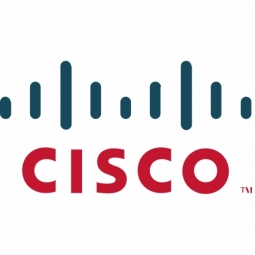Case Studies.
Add Case Study
Our Case Study database tracks 22,657 case studies in the global enterprise technology ecosystem.
Filters allow you to explore case studies quickly and efficiently.
Download Excel
Filters
-
(15)
- (7)
- (3)
- (2)
- View all
-
(11)
- (4)
- (4)
- (3)
- View all
-
(8)
- (6)
- (2)
-
(6)
- (3)
- (2)
- (2)
- View all
-
(4)
- (4)
- View all 9 Technologies
- (5)
- (5)
- (5)
- (4)
- (3)
- View all 17 Industries
- (14)
- (6)
- (4)
- (3)
- (2)
- View all 9 Functional Areas
- (6)
- (5)
- (4)
- (3)
- (2)
- View all 18 Use Cases
- (8)
- (5)
- (2)
- (1)
- (36)
Selected Filters

|
Deploying Agency-Wide Unified Communications Over a Private Cloud
The agency administrative team had been relying on 250 standalone phone systems to support remotely based personnel. However, the aging equipment had become unreliable and lacked modern-day features. Each office had its own unique dialing plan, billing process, support model, and contract, creating complex administrative challenges. The administrators were looking for a better way to support the team and to provide the advanced communications and collaboration tools needed to further the agency’s mission.
|
|
|

|
Contact Center Control, Visibility, and Efficiency from the Cloud
Office Depot, Inc. was facing challenges in delivering a consistent customer experience through their contact center due to the complex global environment and resources deployed across multiple locations around the world. With their previous applications deployed on premises, they lacked central visibility and transparency over operations. It was a challenge for headquarters to manage and control performance globally. Office Depot, Inc. had multiple contact center sites: some in-house and others at partner sites. Site, team, and agent performance management was distributed. Some sites used Office Depot, Inc. contact center systems and reported their performance through them. Others were managed independently by partner managers with their own systems and performance reporting procedures. This resulted in inconsistent performance and customer experiences from site to site.
|
|
|

|
WUN Systems Case Study
WUN Systems, a provider of an end-to-end Workspace Management Platform, wanted to offer a highly reliable and scalable VoIP service that would easily integrate into their platform. They were looking for an enterprise-grade, solid platform that would enable their customers to communicate seamlessly, whether they were working from their HQ, regional office or a remote location. WUN Systems was looking for an innovative, reliable and experienced communications vendor.
|
|
|

|
CBTS improves time-to-market with innovative unified communications SaaS by BroadSoft
CBTS, a subsidiary of Cincinnati Bell, was facing several challenges in its operations. The company was struggling with time-to-market issues, as new features and enhancements were only being delivered once or twice a year. This slow pace was causing them to lag behind their competitors. Additionally, every time CBTS introduced a new version of their client software, they also needed to update the branding, which was a labor-intensive process that further delayed the delivery of the latest features to customers. CBTS also lacked the internal expertise to drive mobile innovation, which was a vital aspect of communications. Lastly, the company needed to increase operational efficiencies to free up their engineering and operational teams’ time to work on more strategic projects.
|
|
|

|
Using a Private Cloud to Serve a Busy University and World-class Medical Center
The university relied on an aging PBX network to serve its medical center and the academic side of its operations. The 30-year-old equipment was no longer supported by the manufacturer and lacked the features and scalability needed to support future growth. Parts procurement had become problematic, maintenance costs were soaring, and it was clear an immediate change was needed.
|
|
|

|
Montgomery College Creates a Connected Campus by Moving Communications to the Cloud
Montgomery College, one of the nation’s largest and most highly regarded community colleges, faced several communication challenges. Team members working remotely across multiple campuses and course delivery sites needed access to a consistent telecommunications infrastructure. The tech-savvy student body expected to communicate and collaborate from any location over any device. The college's premise-based communications platform was comprised of disparate platforms that didn’t easily integrate with other strategic cloud investments. Officials were determined to find a way to transform communications and build a “connected campus”— able to support administrators, faculty and students wherever they work or study.
|
|




